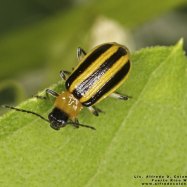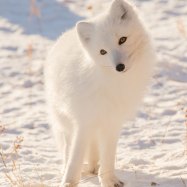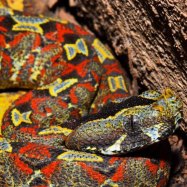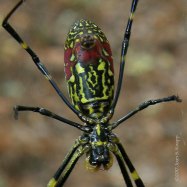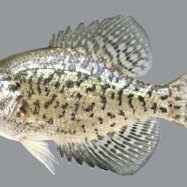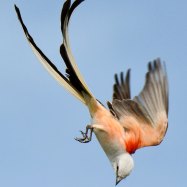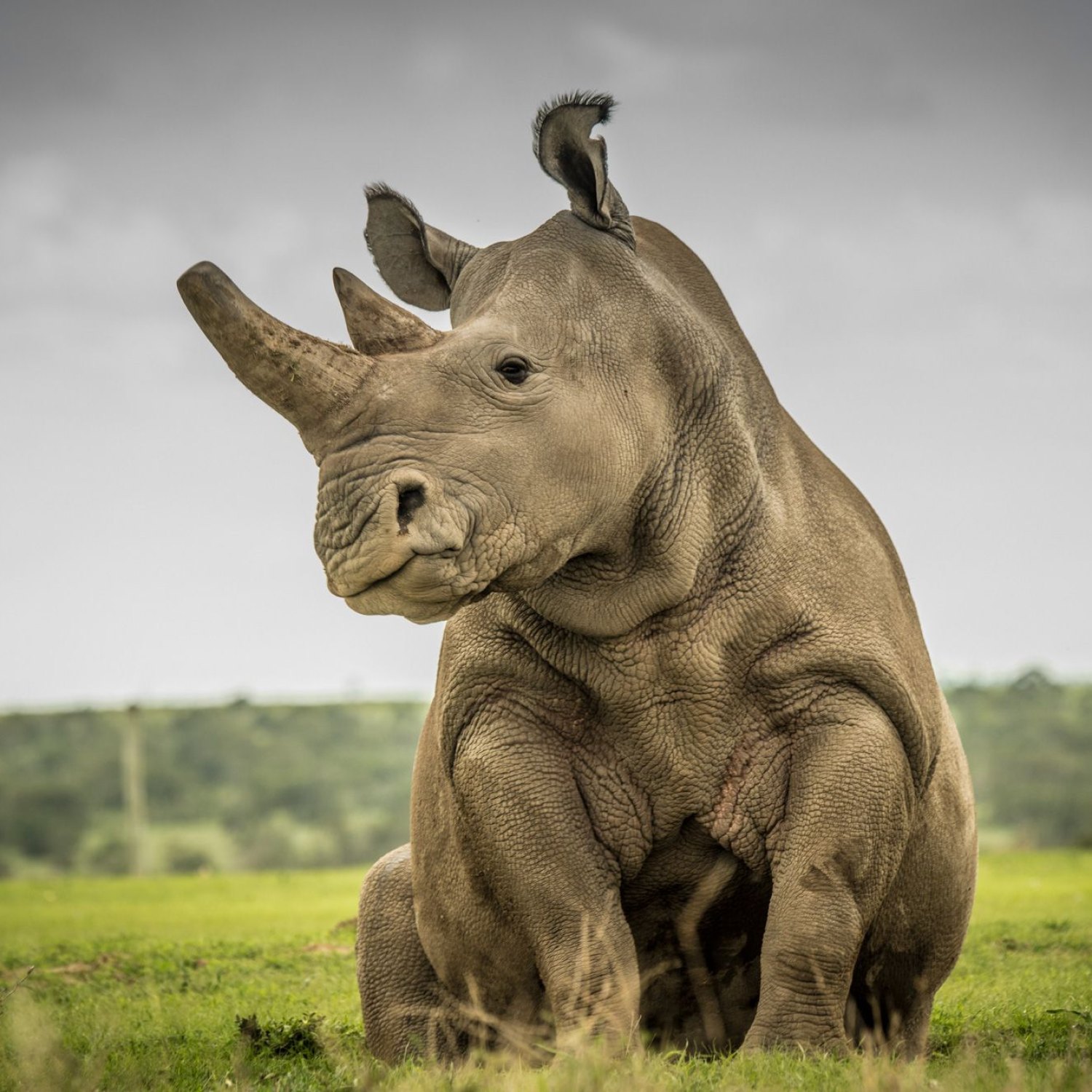
White Rhinoceros
3.4 to 4.5 meters
The White Rhinoceros, found in South Africa, Namibia, Zimbabwe, and Kenya, is an impressive animal with a body shape that is large and bulky. They can grow up to 3.4 to 4.5 meters in length, making them one of the largest land mammals. These majestic creatures belong to the family Rhinocerotidae and are sadly listed as a critically endangered species, with only a few thousand left in the wild. Let's spread awareness and protect these gentle giants. #SavetheRhinos #WildlifeConservation
Animal Details Summary:
Common Name: White Rhinoceros
Kingdom: Animalia
Habitat: Grasslands, savannas, and woodlands
The Magnificent White Rhinoceros: Meet Africa's Gentle Giant
Africa is a land known for its diverse and majestic wildlife, from the roaring lions to the graceful giraffes. Yet, there is one animal that stands out in its own unique way – the white rhinoceros. This stunning creature, renowned for its imposing size and gentle nature, has captured the hearts of people all over the world. In this article, we will take a closer look at this magnificent animal and uncover its fascinating features White Rhinoceros.The white rhinoceros, scientifically known as Ceratotherium simum, is a large, herbivorous mammal belonging to the family Rhinocerotidae. It is the largest species of rhinoceros and one of the largest land animals on earth. Its common name, 'white rhinoceros', is derived from the Afrikaans word 'wyd', meaning 'wide', which describes the animal's wide, square-shaped lips used for grazing on grass.
Belonging to the kingdom Animalia, phylum Chordata, class Mammalia, order Perissodactyla, and family Rhinocerotidae, the white rhinoceros is a descendant of prehistoric creatures and has evolved to its present form over many years. It has a distinctive body shape – large and bulky, with a massive head, short neck, and thick, stocky legs. At its shoulder, the white rhinoceros stands at an impressive height of 1.8 to 2 meters and can weigh up to 2.3 tonnes.
The white rhinoceros is predominantly found in grasslands, savannas, and woodlands in southern Africa Wahoo Fish. Its geographical distribution covers countries such as South Africa, Namibia, Zimbabwe, and Kenya. While its country of origin is South Africa, today, it can also be found in protected areas and game reserves in other parts of Africa. These regions provide the perfect habitat for these gentle giants to thrive.
One of the most striking features of the white rhinoceros is its gray coloration. This has often led to confusion, with some assuming that the animal is indeed white. However, its coloration is mainly due to the dust and mud it covers itself in to protect its skin from the sun and insects. The skin of a white rhinoceros is thick and has a distinctive pattern, unique to every individual. This pattern acts as a form of identification, much like a fingerprint.
Being a herbivore, the white rhinoceros feeds on grass, its primary source of nutrition. These extraordinary creatures have a great sense of smell and can detect their favorite grasses from more than a kilometer away. They are also known to use their prehensile lips to pluck leaves and twigs from bushes and small trees.
One of the biggest threats to the survival of the white rhinoceros is poaching. These animals are poached for their horns, which have been falsely believed to have medicinal and aphrodisiac properties. This belief has led to a significant decline in their population in recent years. However, concerted conservation efforts and the implementation of strict anti-poaching laws are helping to protect the white rhinoceros.
The white rhinoceros has a slow reproductive rate, with a gestation period of 16 to 18 months. The females give birth to one calf at a time, and the mother will nurse the calf for up to two years. It can take up to seven years for a white rhinoceros to reach sexual maturity. Due to this slow rate of reproduction and poaching activity, white rhinoceros numbers are dwindling, with only around 19,700 remaining in the wild.
The conservation of the white rhinoceros is of utmost importance. Organizations, such as the International Rhino Foundation, are working tirelessly to protect the species through habitat conservation, breeding programs, and anti-poaching initiatives. The rhino population has been on the rise in recent years due to these efforts, giving hope for a brighter future for these gentle giants.
The white rhinoceros is an essential species within its ecosystem, helping to maintain a balance between vegetation and grazers. By grazing on grass, they prevent it from overgrowing and choking out other plants, which, in turn, provide food for other animals. Their presence also benefits other species, such as insects, lizards, and small mammals, which use the patches of bare ground created by rhino wallowing for shelter and food.
In addition to its fundamental ecological role, the white rhinoceros also has cultural significance among the communities that coexist with it. For centuries, these animals have been an integral part of African culture, appearing in traditional art and folklore. They are also a popular attraction for tourists, bringing in significant revenue for the African countries they inhabit.
In conclusion, the white rhinoceros is a remarkable animal with many noteworthy features. From its imposing size and distinctive appearance to its gentle nature and vital ecological role, it is an impressive creature that deserves utmost protection. As we continue to work towards their conservation, let us also appreciate the magnificent beauty of the white rhinoceros and strive to ensure its survival for generations to come.

White Rhinoceros
Animal Details White Rhinoceros - Scientific Name: Ceratotherium simum
- Category: Animals W
- Scientific Name: Ceratotherium simum
- Common Name: White Rhinoceros
- Kingdom: Animalia
- Phylum: Chordata
- Class: Mammalia
- Order: Perissodactyla
- Family: Rhinocerotidae
- Habitat: Grasslands, savannas, and woodlands
- Feeding Method: Herbivore
- Geographical Distribution: Southern Africa
- Country of Origin: South Africa
- Location: South Africa, Namibia, Zimbabwe, and Kenya
- Animal Coloration: Gray
- Body Shape: Large and bulky
- Length: 3.4 to 4.5 meters
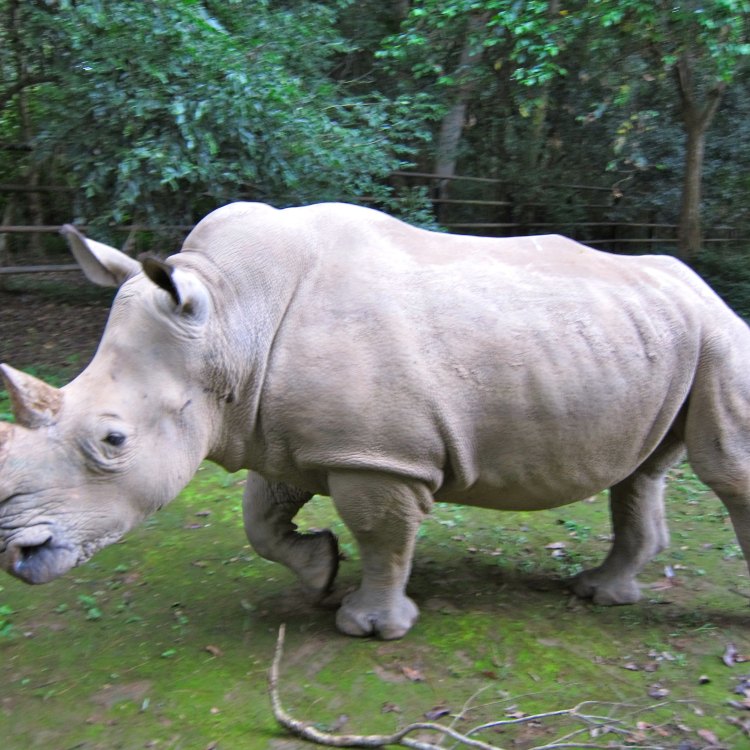
White Rhinoceros
- Adult Size: 3,000 to 4,500 kilograms
- Average Lifespan: 40 to 50 years
- Reproduction: Sexual
- Reproductive Behavior: Polygamous
- Sound or Call: Loud snorting, grunting, and whining
- Migration Pattern: Sedentary
- Social Groups: Solitary or small groups
- Behavior: Grazes during the day and rests at night
- Threats: Poaching and habitat loss
- Conservation Status: Near Threatened
- Impact on Ecosystem: Role as a mega-herbivore
- Human Use: Hunted for their horns and ecotourism
- Distinctive Features: Two horns, wide mouth, and large size
- Interesting Facts: The name 'white rhinoceros' is derived from the Afrikaans word 'wyd', which means 'wide' and refers to the animal's wide mouth. They are not actually white in color, but rather gray.
- Predator: Humans
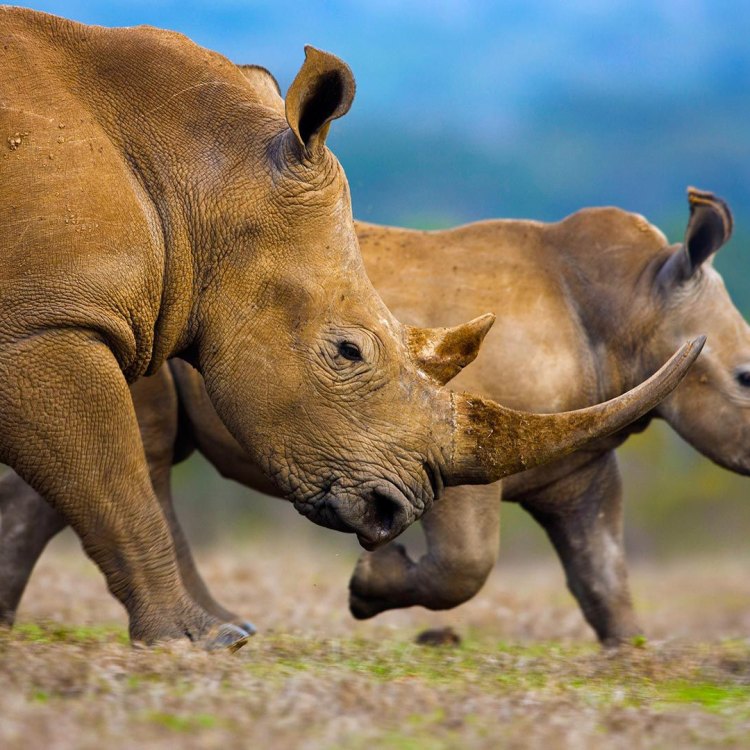
Ceratotherium simum
The Mighty White Rhino: A Symbol of Strength, Beauty, and Conservation
In the vast, open plains of Africa, there roams a majestic creature that has captured the hearts of many. The White Rhinoceros, also known as the Square-lipped Rhinoceros, is a symbol of strength, beauty, and conservation. Their wide-mouthed appearance and massive size make them stand out among other animals in their habitat. But despite their imposing presence, these gentle giants are facing threats that put them at risk of extinction PeaceOfAnimals.Com.Adult white rhinos can weigh anywhere from 3,000 to 4,500 kilograms, making them one of the largest land mammals in the world. They have a lifespan of 40 to 50 years in the wild, and they are known for their distinctive features such as their two horns, wide mouth, and grayish-white color. But there is more to this amazing species than their physical characteristics. In this article, we will dive deeper into the world of white rhinos and discover what makes them so unique and why we must protect them.
The Life of a White Rhino
White rhinos reproduce sexually and are polygamous, meaning they have multiple mates. Females reach sexual maturity at the age of 6-7 years, while males can take up to 10 years to reach maturity. A female rhino can give birth to a calf every 2-3 years, and their gestation period lasts around 16 months. The mother takes care of the calf for up to 3 years before they become independent and start their own journey in the wild.White rhinos have a strong sense of community and often form small groups consisting of a female, her offspring, and sometimes a few males Worm Snake. They are also known to be solitary, but they do come together for breeding or at a common waterhole. As for their behavior, white rhinos are mostly sedentary, meaning they do not migrate to different areas and prefer to stay in one place with access to food, water, and shelter.
During the day, these gentle giants graze on grass and other vegetation, using their strong upper lip to pluck and rip plants. At night, they will often rest and digest their food. Interestingly, white rhinos have poor eyesight but have a heightened sense of smell and hearing. They also communicate through loud snorting, grunting, and whining sounds.
The Threats to White Rhinos
Unfortunately, the future of white rhinos is not as bright as their majestic appearance. These animals face numerous threats that put them at risk of extinction. One of the biggest threats to their survival is poaching. White rhinos are hunted for their precious horns, which are believed to have medicinal properties in some Asian cultures. Despite being illegal and the efforts of many conservation organizations, poaching still occurs to this day, leading to a significant decline in their population.In addition to poaching, habitat loss is another significant threat to white rhinos. As human populations continue to expand, their habitat is being destroyed to make room for agriculture, infrastructure, and other developments. This loss of habitat limits their access to food, water, and shelter, making it difficult for them to survive and reproduce.
Near Threatened Conservation Status
Due to these constant threats, white rhinos are currently listed as "Near Threatened" on the International Union for Conservation of Nature (IUCN) Red List. While this is not as dire as being listed as "Endangered" or "Critically Endangered," it is still a cause for concern. If these threats continue, it is only a matter of time before they are pushed to the brink of extinction.Numerous conservation efforts are being made to protect white rhinos, such as anti-poaching patrols, community education, and habitat restoration. These efforts have shown some success in increasing their population, but more needs to be done to ensure their long-term survival.
The Role of White Rhinos in the Ecosystem
White rhinos play an essential role in the African ecosystem as "mega-herbivores." As massive grazers, they help maintain the balance of plant growth and prevent overgrazing by consuming large amounts of vegetation daily. This, in turn, creates a diverse and thriving ecosystem for other animals to thrive in. They are also crucial in dispersing seeds and providing nutrients to the soil through their dung.Their presence in the ecosystem is vital, and if they were to disappear, it would have a significant impact on the entire ecosystem, leading to a ripple effect that would affect other species and their habitats.
Human Interactions with White Rhinos
Unfortunately, humans are not only responsible for the threats white rhinos face, but we also play a significant role in their survival. Historically, these animals were hunted for their horns and other body parts, but today, ecotourism has become a significant source of income for local communities and governments. Many people travel from all over the world to see these magnificent creatures in their natural habitat, bringing in revenue for conservation efforts and local economies.However, it is essential to note that responsible and ethical tourism is crucial in ensuring the safety and well-being of these animals. It is crucial to support reputable and sustainable tour operators that prioritize the animals' welfare and conservation efforts.
Interesting Facts About White Rhinos
- Contrary to popular belief, white rhinos are not white in color. Their name is derived from the Afrikaans word "wyd," meaning "wide" and refers to their wide mouth.- White rhinos are not entirely herbivorous; they also consume small amounts of minerals by licking rocks and soil.
- One of the white rhino's closest living relatives is the tapir, a mammal found in the forests of Central and South America.
- Though they are known for their massive size, white rhinos are among the quieter of all rhino species.
In Conclusion
The white rhinoceros is a unique and fascinating species that plays a crucial role in the African ecosystem. Despite their large size and strong presence, they face numerous threats that put them at risk of extinction, mainly due to human activities. It is up to us to protect these gentle giants and ensure their survival for future generations. By raising awareness, supporting conservation efforts, and practicing ethical tourism, we can contribute to the conservation of this magnificent species and show our respect and admiration for these incredible creatures.
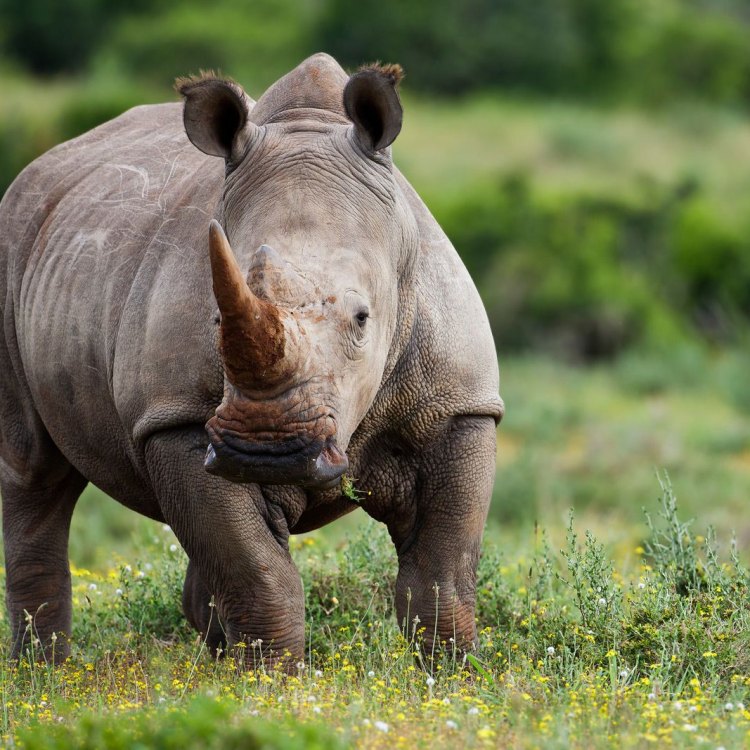
The Magnificent White Rhinoceros: Meet Africa's Gentle Giant
Disclaimer: The content provided is for informational purposes only. We cannot guarantee the accuracy of the information on this page 100%. All information provided here may change without prior notice.





